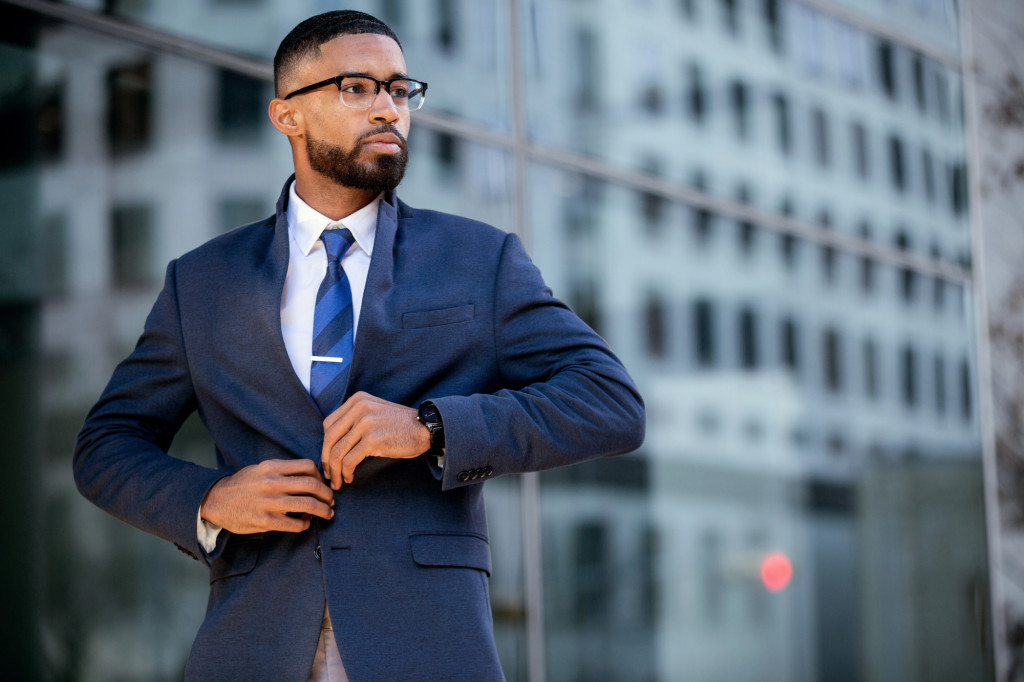There is a nuanced dance Black men perform every day between how they are seen and how they want to be seen. Nowhere is that dance more intentional than in the political sphere, where clothing becomes both a battleground and a canvas.
For Black men in public life, “dressing the part” is not about vanity; it’s about survival, strategy, and subversion.
Let’s be clear: the stakes are different. A wrinkled shirt or misfitted blazer on a white candidate might be forgiven as folksy and casual charm. But for Black men, fashion missteps can be unfairly read as incompetence, a lack of seriousness, or worse. The wardrobe, then, becomes a weapon of choice.
When a Black man steps to the podium in a well-tailored suit, he’s not just dressing for the moment; he’s countering centuries of distorted perceptions. He’s controlling the narrative.
Style has always functioned as armor for Black men, both literally and metaphorically. A fresh fade, a clean line-up, a precise crease—these details matter. They signal self-respect, attention to detail, and readiness.
In political settings, these choices also signal credibility in spaces that often default to skepticism.
But that armor also has flair. Look at how Black male leaders use color, texture, and silhouette to communicate confidence and charisma. Burgundy blazers. Patterned socks. Gold cufflinks. These flourishes whisper individuality in rooms that often demand conformity.
Many Black political professionals maintain two or more wardrobes—one for the room, and one for the people. Suits for the State House. Jordans and hoodies for the block party. This isn’t duplicity, it’s versatility.
It’s knowing how to shift but never shrink. It’s code-switching with fabric and fit.
It’s also generational. The younger wave of Black political changemakers are embracing streetwear, denim, and even tattoos as visible parts of their identity. They’re not checking their culture at the door; they’re bringing it in with confidence.
Black male style in politics is not just fashion; it’s a form of nonverbal advocacy. It says: I belong here. I’m bringing my full self here. And I’m not just here to participate—I’m here to lead.
Take Baltimore Mayor Brandon Scott, for example. At just 40, with a full beard and signature afro, he stands behind the podium as a symbol of lived experience, not just political ambition.
A native son of West Baltimore, Scott leads not with performative polish, but with intentional presence, pairing tailored suits with authenticity and strategy with street-born wisdom. His very image, like his leadership, resists erasure.
As he told The Quintessential Gentleman: “It’s different when you had the gun in your face. It’s different when you’ve been sat down in handcuffs just because you were breathing while Black in your neighborhood.”
That difference is worn not just in his story, but in his style. It’s the embodiment of what happens when power looks like us.
The suit might be sharp, the sneakers fresh, the lineup crisp, but none of it is accidental. Every detail is doing double duty: signaling polish while asserting presence, tradition while honoring truth.
For Black men in politics, style is both an entry pass and protest—proof that we can code-switch without compromise, that we can take the mic without muting ourselves.
The message is even clearer now: power doesn’t just sit in the seat—it walks in the room with us.
Photo Cedit: DepositPhotos.com




